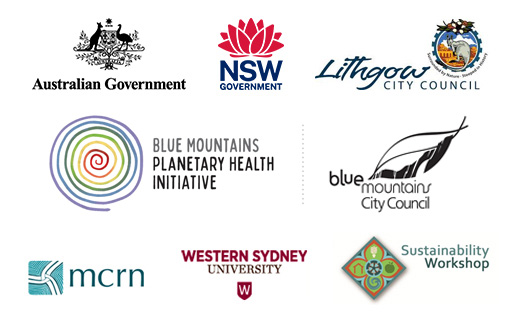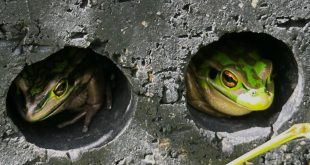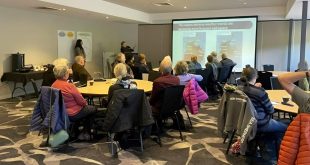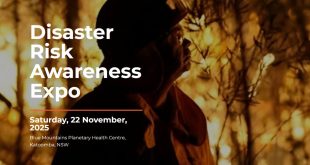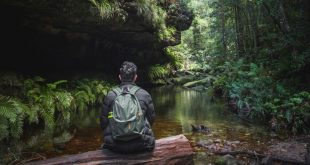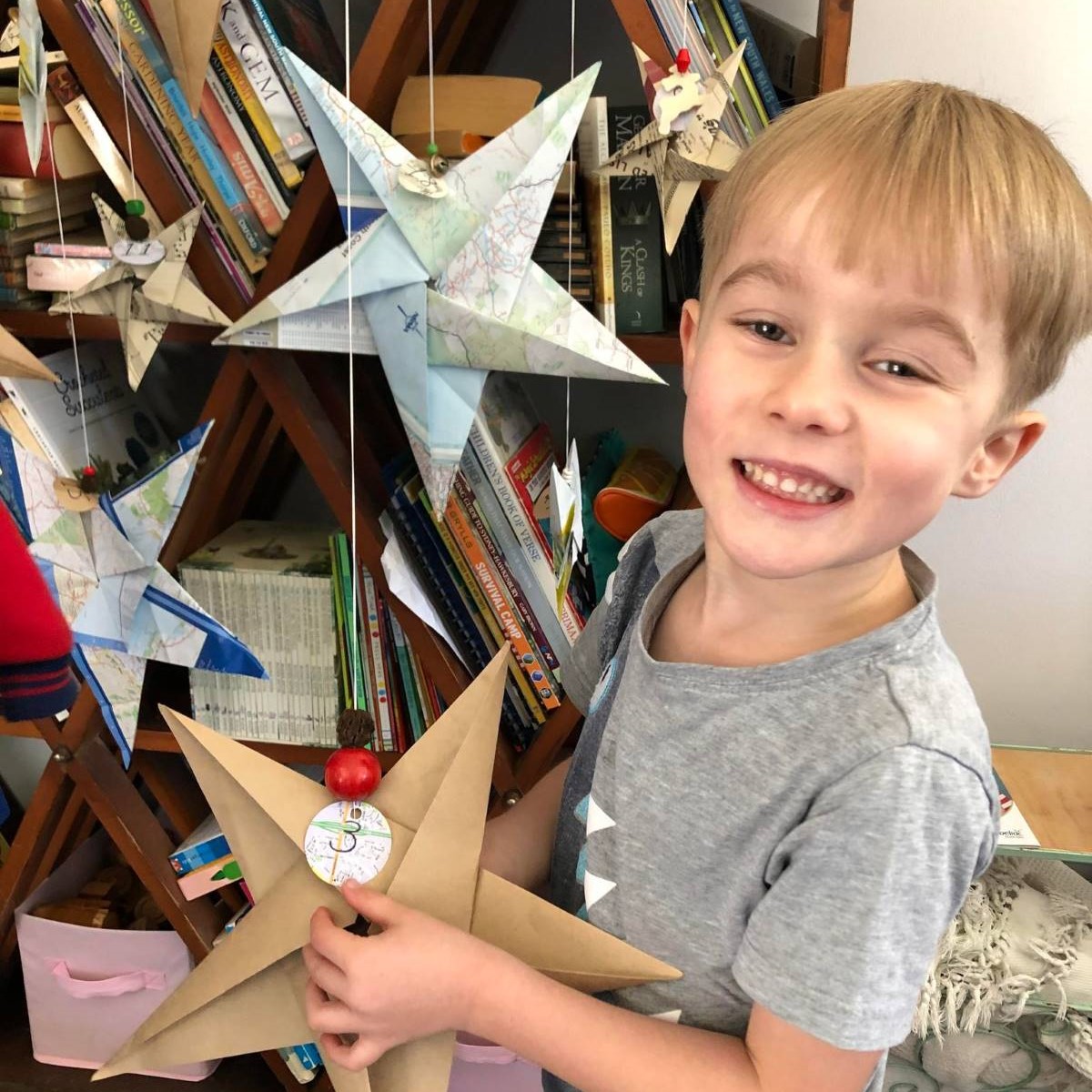
Zach Napper knows that their new Christmas traditions are fun, creative and sustainable. (Photo: Erin Napper)
Story by Gabiann Marin
For many families looking forward to Christmas, the cost of living, as well as sustainability, have been at the forefront of their minds. Two families in the Springwood area share how they’re creating fun and affordable ‘new’ traditions.
Key Points:
- Christmas is one of the most wasteful periods in Australia, with an estimated 50% more waste created as we celebrate the festive season.
- Australians receive over 20 million unwanted gifts on Christmas day and dispose of over 15000km of wrapping paper.
- A number of families are looking at different ways to celebrate Christmas that incorporates more sustainable, less wasteful and less exhausting Christmas traditions
Erin and Jared Napper of Winmalee
The summer holiday period is the most wonderful time of year for Blue Mountains residents, but it can also be the most wasteful. Recent studies have suggested that during the festive season our waste increases by 50%, with the vast majority of that going into landfill. Because no one wants to put a damper on celebrations, or look like a nasty old Scrooge ruining Christmas for everyone, it can be hard to tackle the problems of over consumption, over indulgence, shopping fatigue, stress and disappointment that often characterise an Aussie Christmas.
But for Erin and Jared Napper of Winmalee, creating a more sustainable Christmas is something they have been doing for years. The parents of four realised six years ago that celebrating the old fashioned way was something that simply wasn’t working for them.
“It was exhausting,” Jared explains as he and Erin sit at their handmade kitchen table, crafted by Jared from reclaimed wood. “Trying to do Christmas the traditional way is huge and often ended up with the kids in tears and tantrums.”
After a few years of disappointing, expensive Christmases that left everyone tired and emotional, the Napper family started to think about how to create a new kind of Christmas that focussed on family and sustainability. With four children aged between 5 and 14 years, the way they do Christmas also has to be flexible enough to change every year to serve the needs of their ever-changing family requirements. The traditional mall shopping, opening presents on Christmas morning and serving a huge family lunch in the afternoon was not something that Erin could see serving the family in the longer term.
“Being sustainable of course is about the environment and about money but it is also very personal: what we can achieve in our lives, where we are at, with the resources we have available.” – Erin Napper
So, six years ago the family came up with a new, and unique approach to celebrating Christmas in a way that worked for all of them, and the environment. Surprisingly it is one which borrows from an even older Christmas tradition: the European Advent calendar.
Advent calendars were first devised in 1850’s Germany, although the tradition of Advent itself dates back to the 4th Century as a way for Christian communities to prepare for Christmas celebrations. Usually beginning on December 1 and lasting up until Christmas Eve, Advent was used as a way to prepare the heart and spirit for the celebration of the birth of Christ, and consisted of days of prayer, reflection and community activities. With the introduction of the Advent calendar the period became synonymous with small gifts received each day.
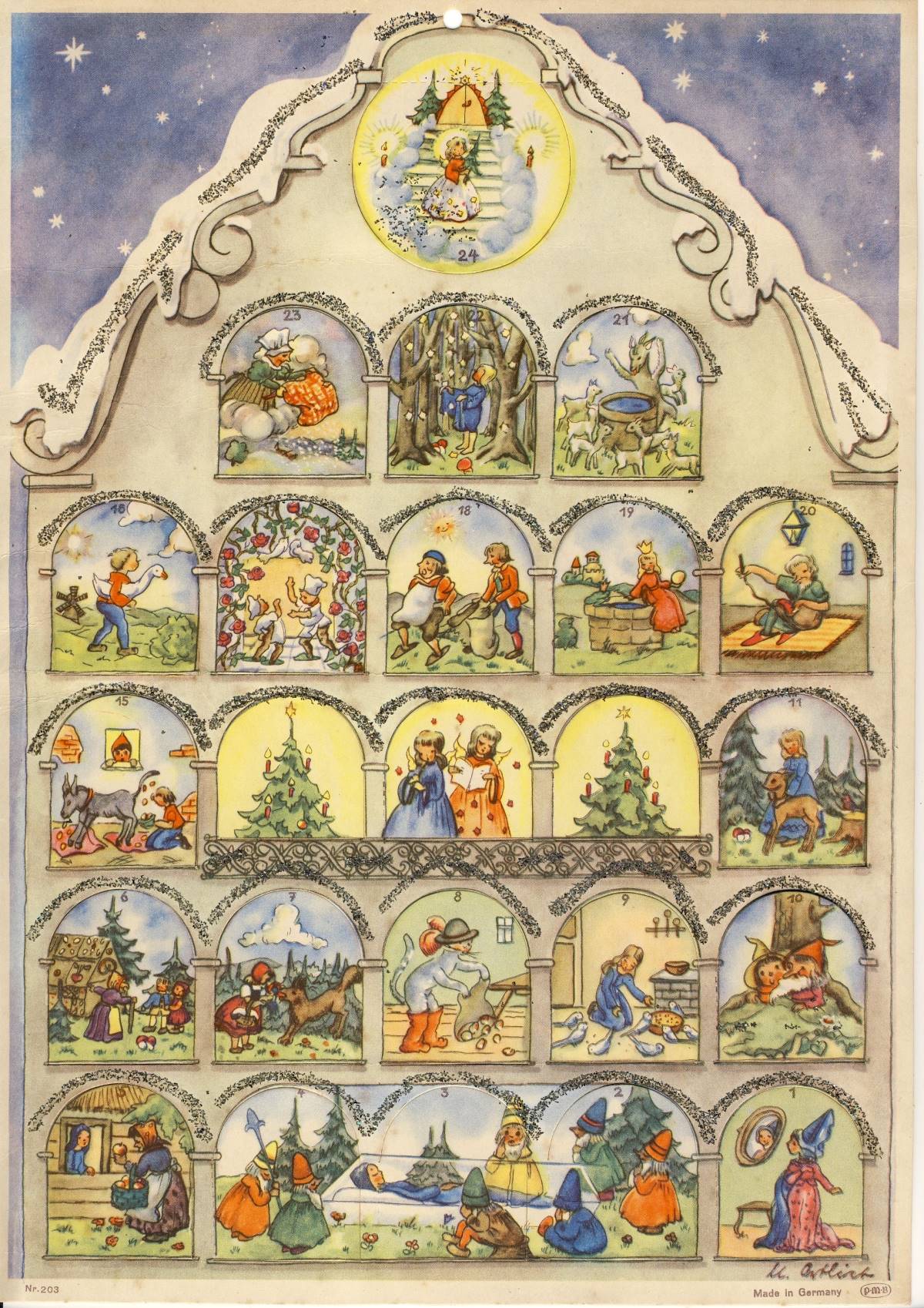
Advent Calendars have been helping people celebrate Christmas since the 1850’s. (cc. BY-NC-SA 4.0 DEED)
“We never celebrated Advent when I was a kid, but I did have an old vintage poster in my bedroom. It was a Christmas picture and had all these little doors you could open. I was fascinated by it, and always wanted to do something like that”, said Erin.
As the years passed the old Advent calendar was gone but not forgotten. When Erin and Jared began thinking about ways to refocus their family’s Christmas to something more sustainable, Erin recalled that old poster and came up with a new and innovative idea.
“We don’t call ourselves religious, we used to be but not anymore, and I don’t like the idea of giving my kids chocolate every day or having to buy trinkets for four kids for 24 days (it can get expensive!) I also don’t want all that clutter and mess and stress of having to find things that would be suitable.”
Instead, Erin’s Advent calendars focus on creativity and family engagement more than gifts and religious traditions.
“I was exploring different ways of doing Advent without it being a materialistic, wasteful, giving gifts kind of thing. I landed on the idea of it being a calendar where we structure in what we have to do in the lead up to Christmas: like baking or making Christmas cards, but also include different creative and craft activities, outdoor excursions and factoring in just some quality family time by doing a puzzle or going on a bushwalk.”
By focusing on activities which could be done with their children: Charli (14), Sam (12), Zach (9) and Max (5), Erin and Jared had hit upon a way to make Christmas not just less materialistic, wasteful and stressful, but more about family, creativity and sustainability. Erin and Jared also appreciated that the Advent tradition gave them a way to spread their Christmas celebration and preparations across the entire month of December, getting the kids actively involved not just in the gift receiving, but all the elements that make Christmas such an important time for families and friends.
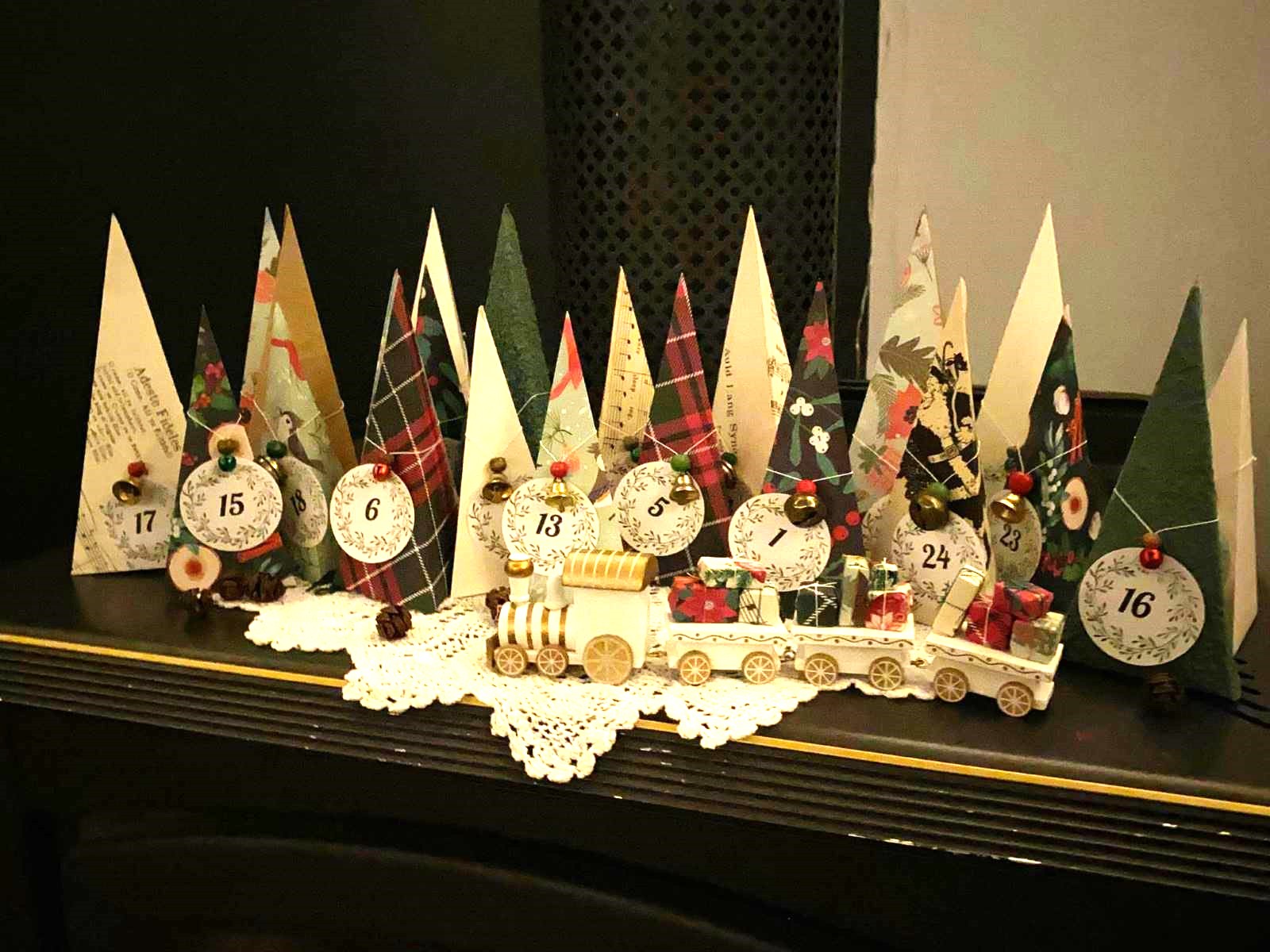
Erin’s Advent Calendars are always made of reclaimed paper although they can be paired with decorations found in op shops or made from native flora. (Photo: Erin Napper)
It took a bit of trial and error to find the right way for the family to adapt the tradition to something that worked for them. The first year Erin found herself wrapping different items from their home which symbolised the Advent activity for the day: a bike helmet wrapped up for a family bike ride, or a paint brush for an art project.
The couple laugh as they recall how impractical an idea that turned out to be! They found themselves having to either unwrap an item when one of their children wanted it for another purpose, or having to explain why it was missing, which kind of ruined the overall surprise.
After that Erin decided to craft a creative ‘calendar’ each November: usually out of paper, recycled materials or things she already had. She simply places a written description of the activity inside, which will be the ‘gift’ for that day. The Calendar is then hung up or placed around the house and each morning the children open that day’s calendar item. There are no actual material gifts, as the Napper Advent tradition is all about “capturing those joyous experiences of Christmas but spread out so that we have the energy to get through the whole Christmas period.”
The Advent calendar needs careful planning, as coming up with 24 different activities which are suitable for all the children each year can be difficult. Their oldest child is now in her teens and although she still enjoys the fun and magic of Christmas, she is also at a stage where she doesn’t always want to be surprised every morning in December by an activity that may ‘hem her in’ for the day. Thankfully the flexibility the family had initially baked into the Advent Calendar idea has helped them cater it to the different needs of the family over time.
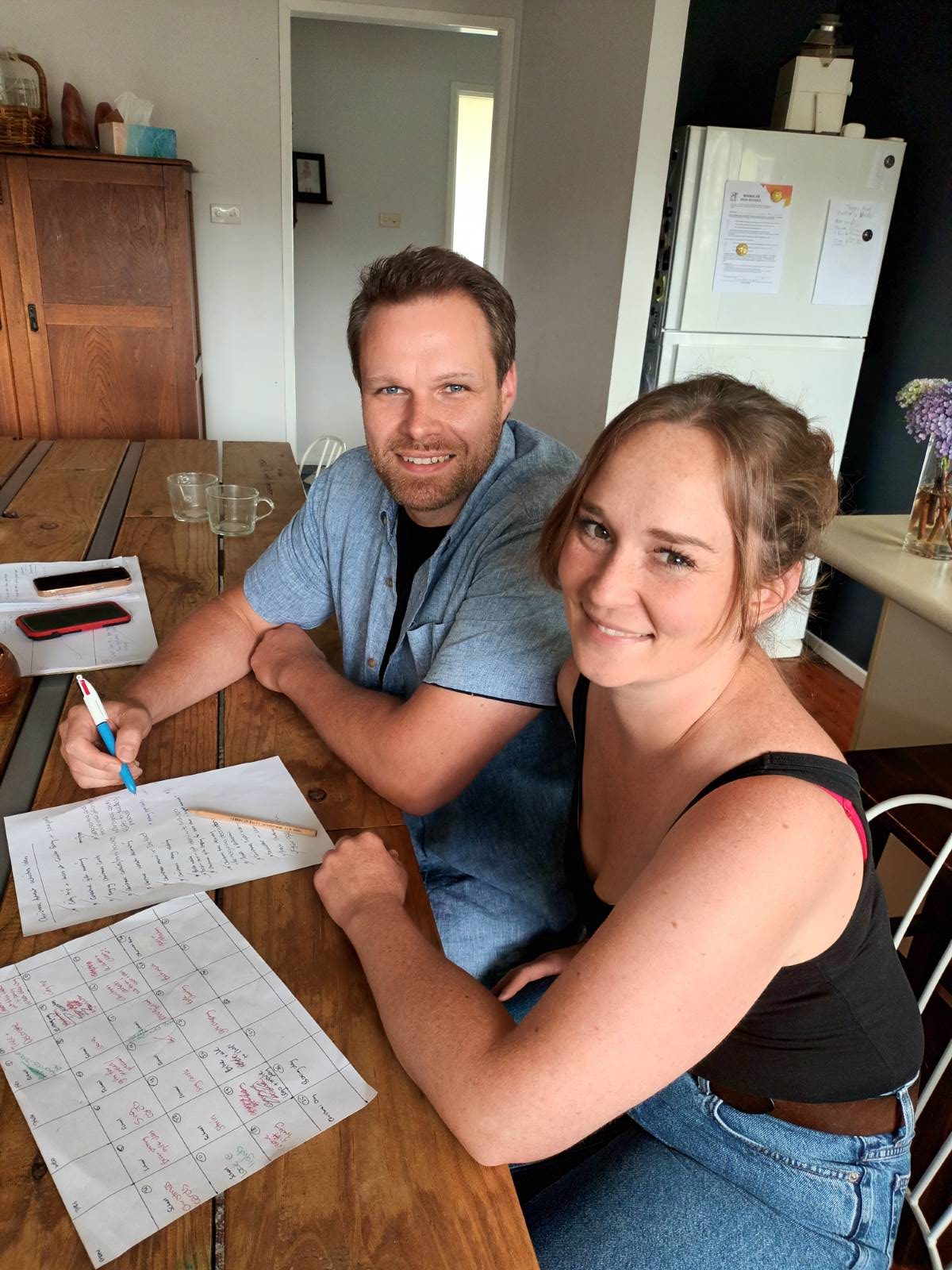
Erin and Jared plan their calendar activities in advance. (Photo: Gabiann Marin)
“We really have to think about what we include and when. We have learned through experience that the activities have to be carefully structured throughout December to make sure it is all achievable.”
To do this Erin and Jared start planning their Calendar in early November, writing up a list of possible activities and then scheduling them throughout the month. The children all suggest activities which could be included in the calendar, although which of their ideas will be part of the Advent month still remains a surprise until all the windows are opened.
Proposed activities have included things like rock climbing, a family trip to the city and a Christmas movie night. Other really practical activities, such as making gifts for teachers and decluttering the house, are also interwoven into the purely fun stuff.
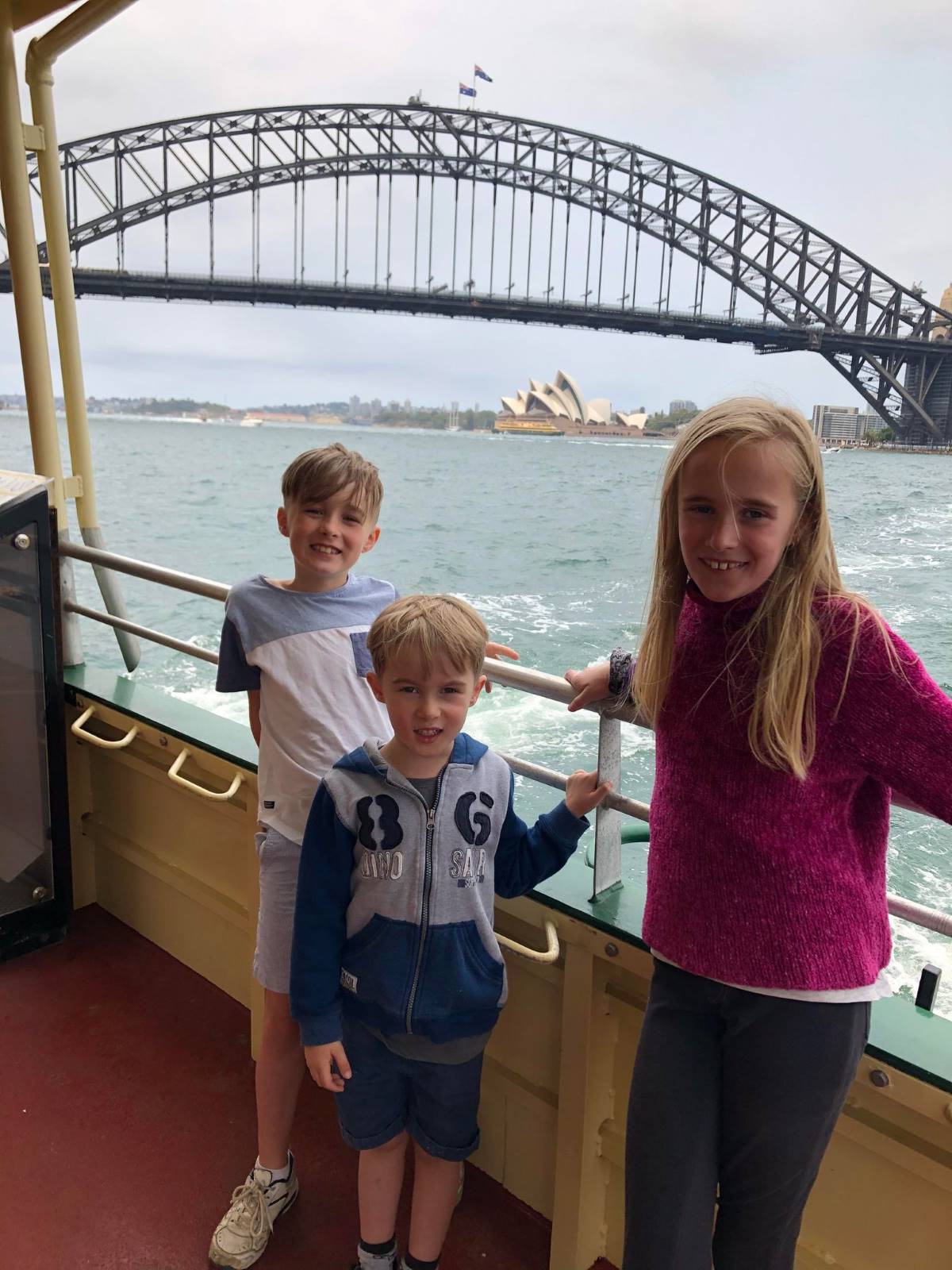
Trips and excursions are a great alternative to material gifts. Three of the Napper children, Charli, Zach and Sam love the option of getting out as one of their Advent surprises. (Photo: Erin Napper)
“Our eldest son is not materialistic at all. In fact, as we were preparing for the bushfires [in 2019] and I asked him what he wanted to pack from his room, he was happy to leave it all behind. All he truly needed were some clothes and a book.”
The Nappers have created a family tradition of acquiring experiences, not things, and as a result they have strong family relationships and are raising children who will naturally adapt and thrive in a less materialistic and more sustainable future.
“Our kids get as super excited about doing Advent as they would about Santa coming to visit.”
It’s not surprising, because the idea of 24 surprises over Christmas is exciting. Not only are there great activities to uncover as each calendar date is opened, but the calendars themselves are often a work of art, demonstrating Erin’s talent for creativity and artistry.
Each calendar is always crafted from reclaimed paper which is repurposed into magical Christmas decorations that fill the house with a creative Christmas vibe. “It’s really important that it is part of the Christmas decor,” Erin insists, and as a result each year’s calendar is often three dimensional and highly decorative.
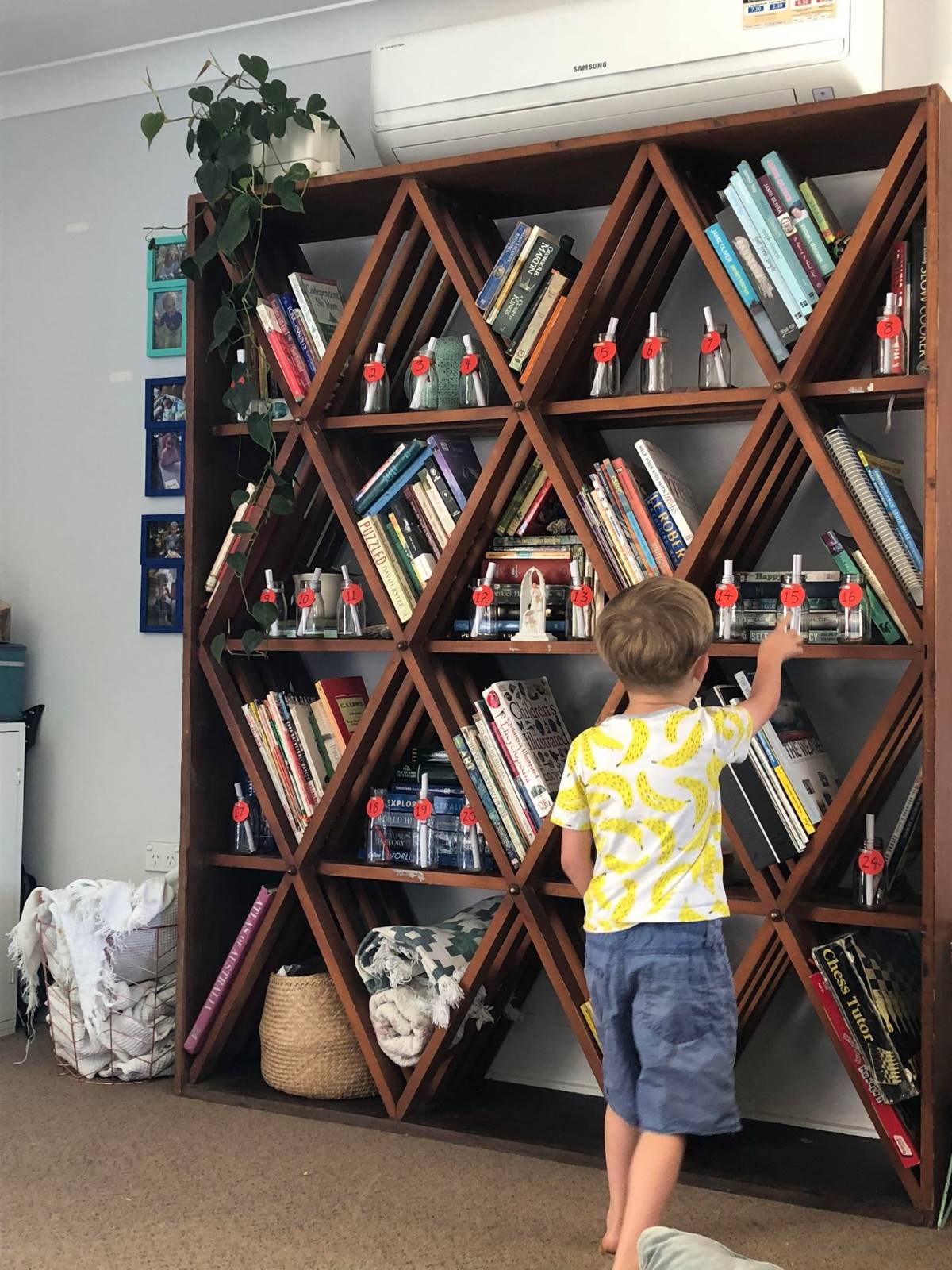
Recycled bottles with small scrolls create a three-dimensional Advent calendar for the Napper Family (Photo: Erin Napper)
In recent times the calendar has consisted of a number of hanging paper origami Christmas trees which opened to reveal the activity, or small scrolls beautifully presented in 24 individual reclaimed glass bottles which sat on the Napper bookcase. The creativity of the calendar has become one of the most beloved of the family’s Christmas traditions.
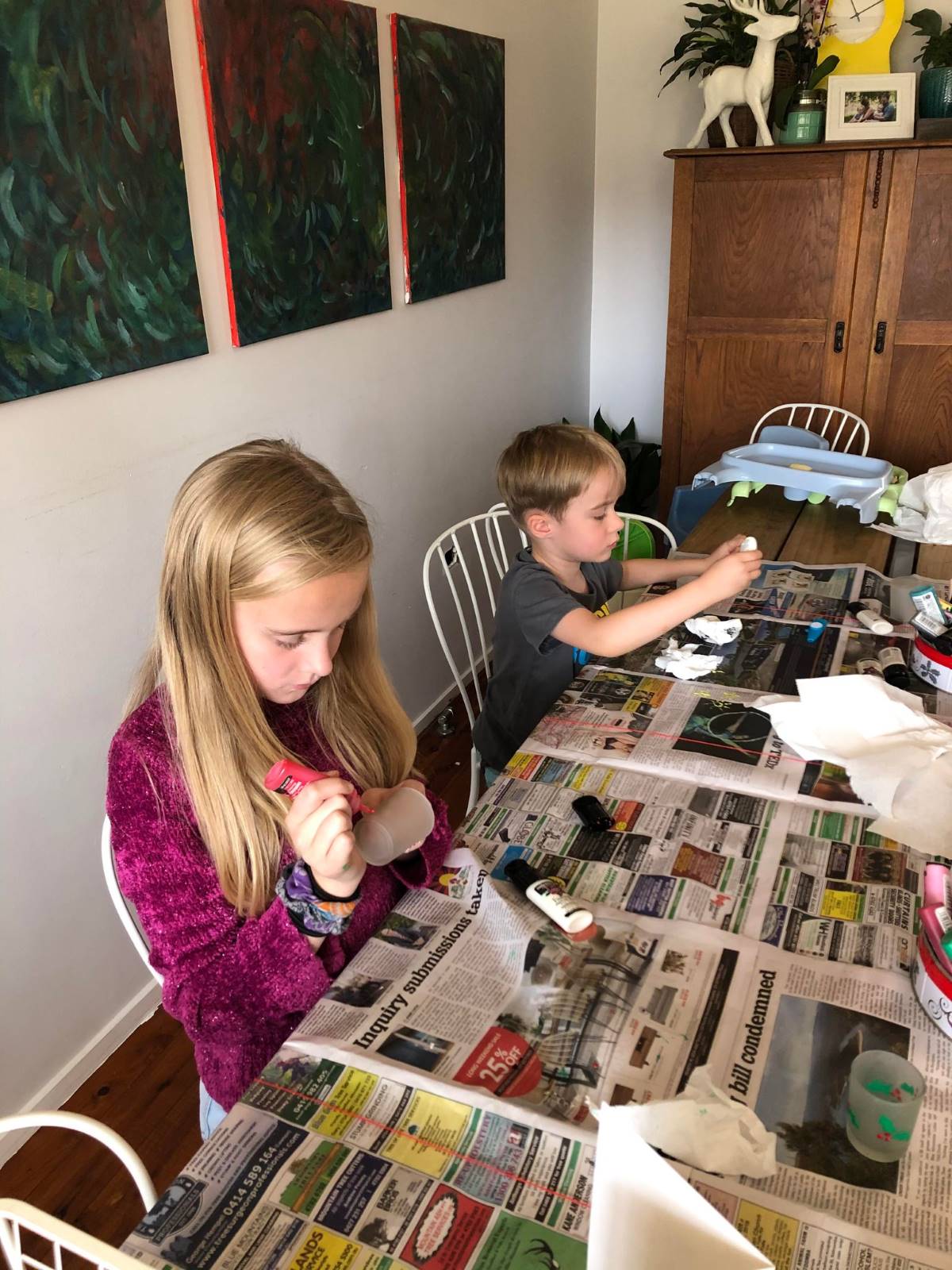
Charli and Zach enjoying family and craft activities that replace chocolates and small gifts in the Napper’s Advent tradition. (Photo: Erin Napper)
Erin has even planned for an adult’s version of the Advent calendar for her and Jared for when the kids are grown up with families of their own.
“I love the idea of creating a Christmas cocktail as one of the activities, experimenting with a mint or a gingerbread one,” Erin laughs.
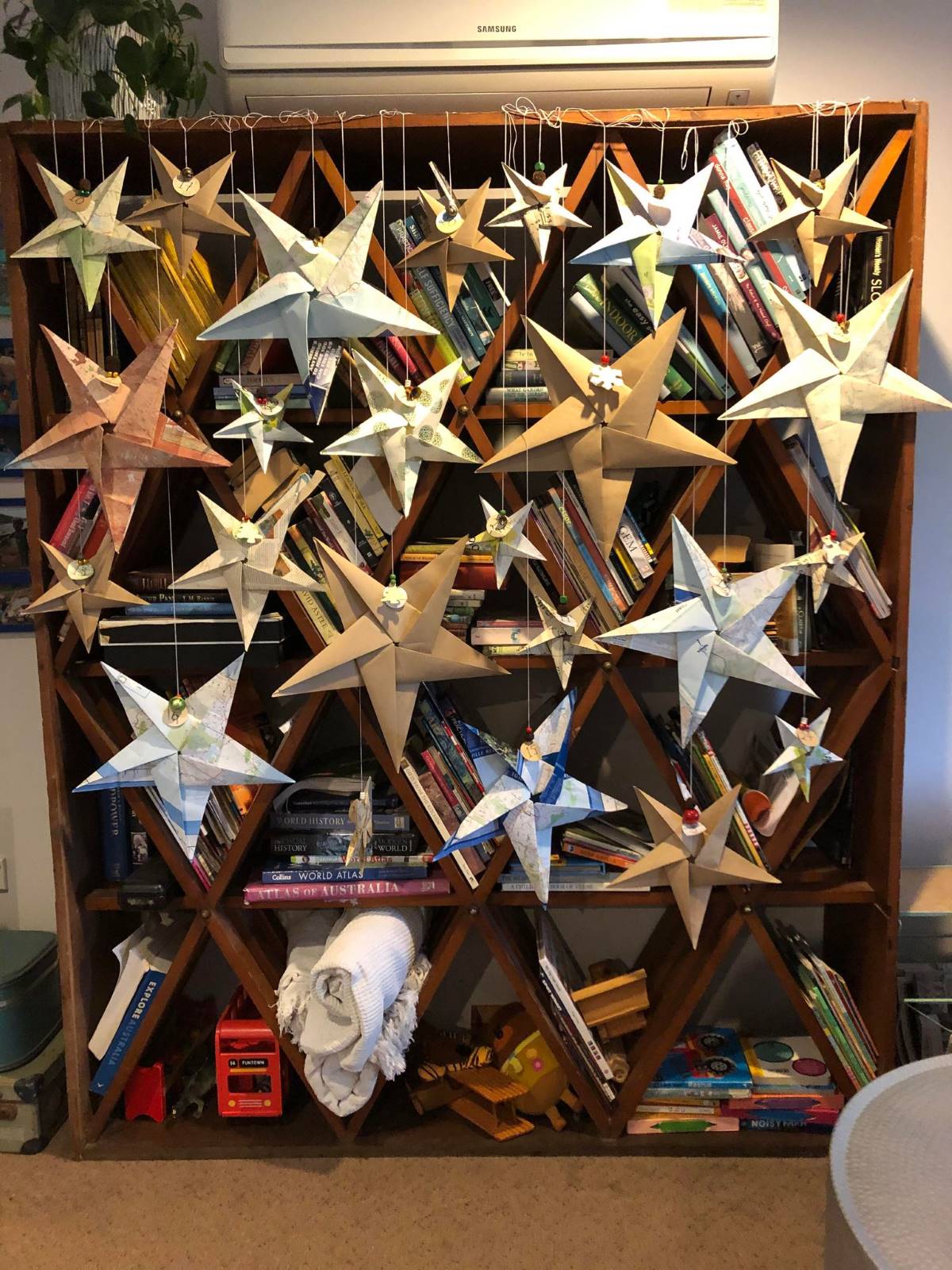
The flexibility and creativity of the different Advent ideas means they could work for anyone. (Photo: Erin Napper)
Jared sums up the real benefit of the Napper’s Christmas advent tradition. “By the time you get to Christmas Eve and Christmas Day you already feel like you have experienced Christmas, so it doesn’t have to turn into a big day.”
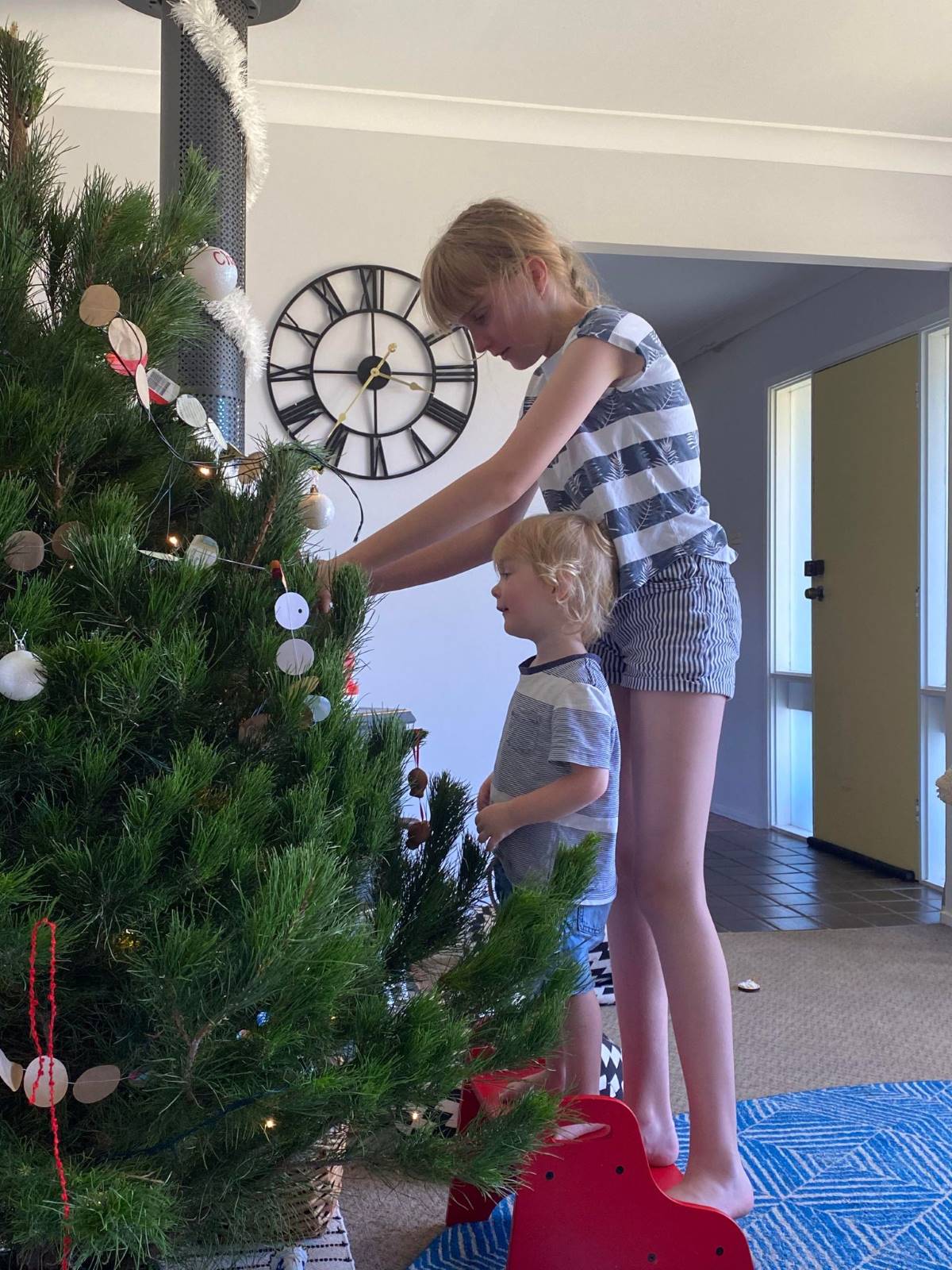
Max and Charli Napper with their living Christmas tree which can be reused year after year. (Photo: Erin Napper)
The Ankers clan of Springwood
However, for some families, like the extended Ankers clan of Springwood, the big Christmas Day is the point of Christmas. With multiple family members across the Mountains and Western Sydney, just trying to achieve that in a sustainable, affordable and environmentally considerate way can pose a real challenge.
“It’s all about focusing on family, in a way that we can all afford,” Janette Ankers explains as she shares her family’s approach to the Christmas season. “We want to make it as stress free as possible, so we have become quite organised.”
Rather than focusing on huge Christmas shopping sprees and mountains of presents, the Ankers centre their Christmas celebration around a family festive lunch where the whole family all shares a meal and exchanges just one gift each. “There is so often a pressure to buy gifts even if you know the person doesn’t need anything, so we have simplified it down.”
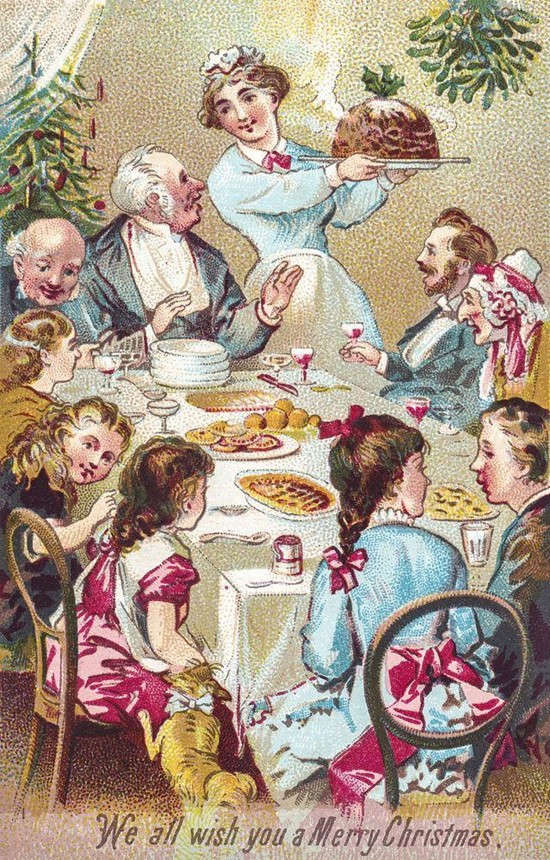
The big family Christmas Feast has been a long-held tradition but can result in a lot of food and packaging waste. (Photo: Creative Commons license CC0 1.0 DEED)
Changing multiple presents into a Kris Kringle option, where each person buys just one gift for a single member of the family, determined by a random lottery, has taken the expense and stress out of present buying and reduced the waste the large family was formerly drowning in each Christmas.
“So much of what people buy ends up in landfill or is broken by the end of Xmas day.” – Janette Ankers
Janette’s observation is supported by a survey done by Huffington Post which estimated that in 2018 Australians spent about 20 million dollars on gifts that no one wanted, a figure that is estimated to have risen by about 18% each year since then.
Some of these unwanted gifts turn up post-Christmas in Op Shops or listed on internet sites such as Gumtree, but an estimated 80% of unwanted Christmas presents end up being thrown away. Simply by cutting down on buying presents the Ankers are part of a growing trend to greatly reduce the cost and impact of the millions of unwanted gifts that are bought each Christmas in Australia.
Like the Nappers, the Ankers Family found that the amount of energy and money spent just on hunting down and purchasing the gifts can lead to a huge let down on Christmas day as packages are opened and then quickly discarded as the next gift is presented.
It’s also incredibly taxing, particularly on the female members of the family like Janette, her sister Marissa and sister-in-law Meg, who are usually the ones tasked with most of the Christmas preparation. A recent survey has found that women spend an average of 20 hours shopping for Christmas presents, and an additional 7 hours shopping for food and beverages, with the overwhelming majority of these hours spent in the lead up to Christmas in late November and early December. The Ankers try to share the burden across the family through having different family members hosting each year.
The shopping fatigue can still be draining though, so Janette and her family have found a way to overcome this as well.
Not only do they limit the number of gifts bought across the family, but also add a fun theme to the shopping. “We have had gift themes like having to give something handmade, or a re-gifted present. Last year the theme was that each gift had to be second hand and start with the same letter as the person you were giving it to.”
This can result in some funny and unexpected Christmas surprises, such as 14-year-old Ffion unwrapping a pretty impressive frypan or young Marley receiving a colourful makeup bag. The craziness of the presents adds a fun element at Christmas and turns shopping or making the gifts into a creative experience rather than a retail slog through fluorescent lit shopping malls serenaded by celebrity inspired Christmas carols.
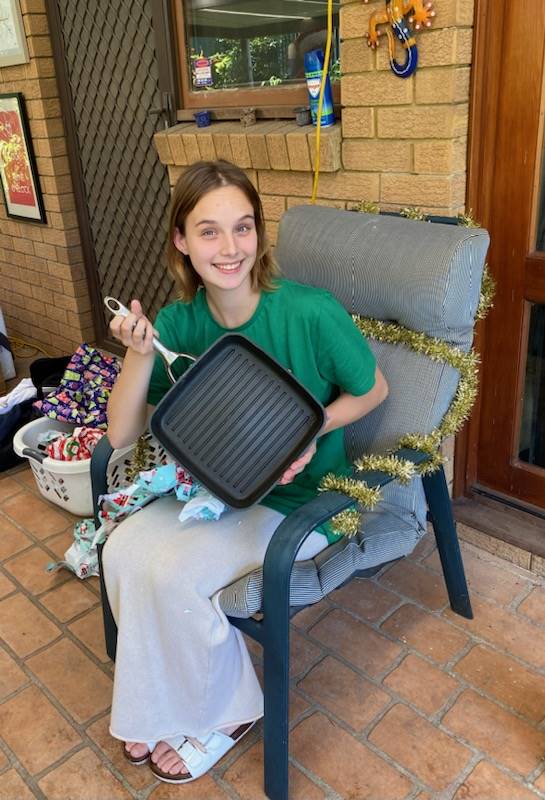
Ffion Ankers shows off her customised present during her family’s fun second-hand themed Christmas (Photo: Janette Ankers)
“We also source all our Xmas decorations from Op Shops. It is amazing what you can find, and we often donate them back again so someone else can enjoy them the following year,” Janette explains proudly. It’s all part of a circular economy that is the underlying ethos of the Ankers festivities.
The Ankers also have an almost waste free Christmas lunch.
“Because we know how many people are coming to our Christmas lunch, we can cater for it properly. Everyone has a food or beverage that they are in charge of and so we cut down waste by making sure no one is bringing food that is simply there for the sake of it, everything is eaten on the day and we almost never have any leftovers. We have it down to a fine art now,” Janette says.
Festive Traditions have always evolved over time, melding into different environments, different religious and cultural groups to create a true myriad of experiences enjoyed across the globe and across our communities. It is this flexibility which has helped to keep Christmas and other festive celebrations such popular and perennial holidays, even as so many have moved away from the original religious tradition. As we evolve and shift towards a new more sustainable future, our Christmas Traditions are doing so too, combining and offering all sorts of ways in which we can reflect on and celebrate what is important to us.
“It comes from us.’ Erin suggests. ‘It’s what we choose to do and focus on. Not what we are told is important.”
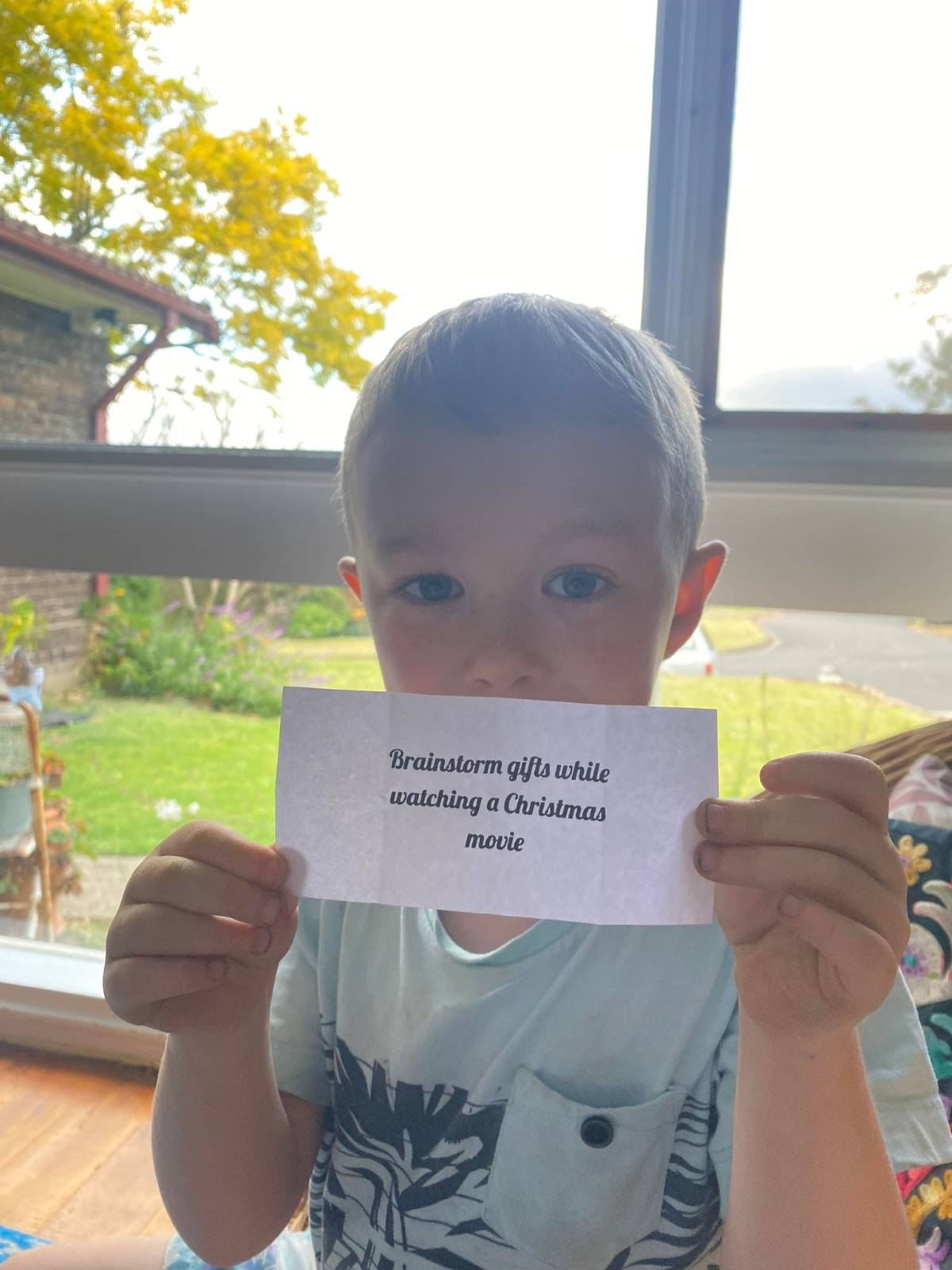
Max Napper looks forward to that evening’s Advent activity. (Photo: Erin Napper)
Take Action:
- Have a living Christmas tree which can be reused each year
- Instead of buying wrapping paper, reuse paper (newspaper, children’s artworks from school and last year’s wrapping paper) or use fabric such as scarfs or fabric remnants and use string or ribbon instead of sticky tape. And try this: How to wrap without using tape
- Make reusable Christmas crackers: How To Make A Reusable Christmas Cracker
Share this article:
This story has been produced as part of a Bioregional Collaboration for Planetary Health and is supported by the Disaster Risk Reduction Fund (DRRF). The DRRF is jointly funded by the Australian and New South Wales governments.
